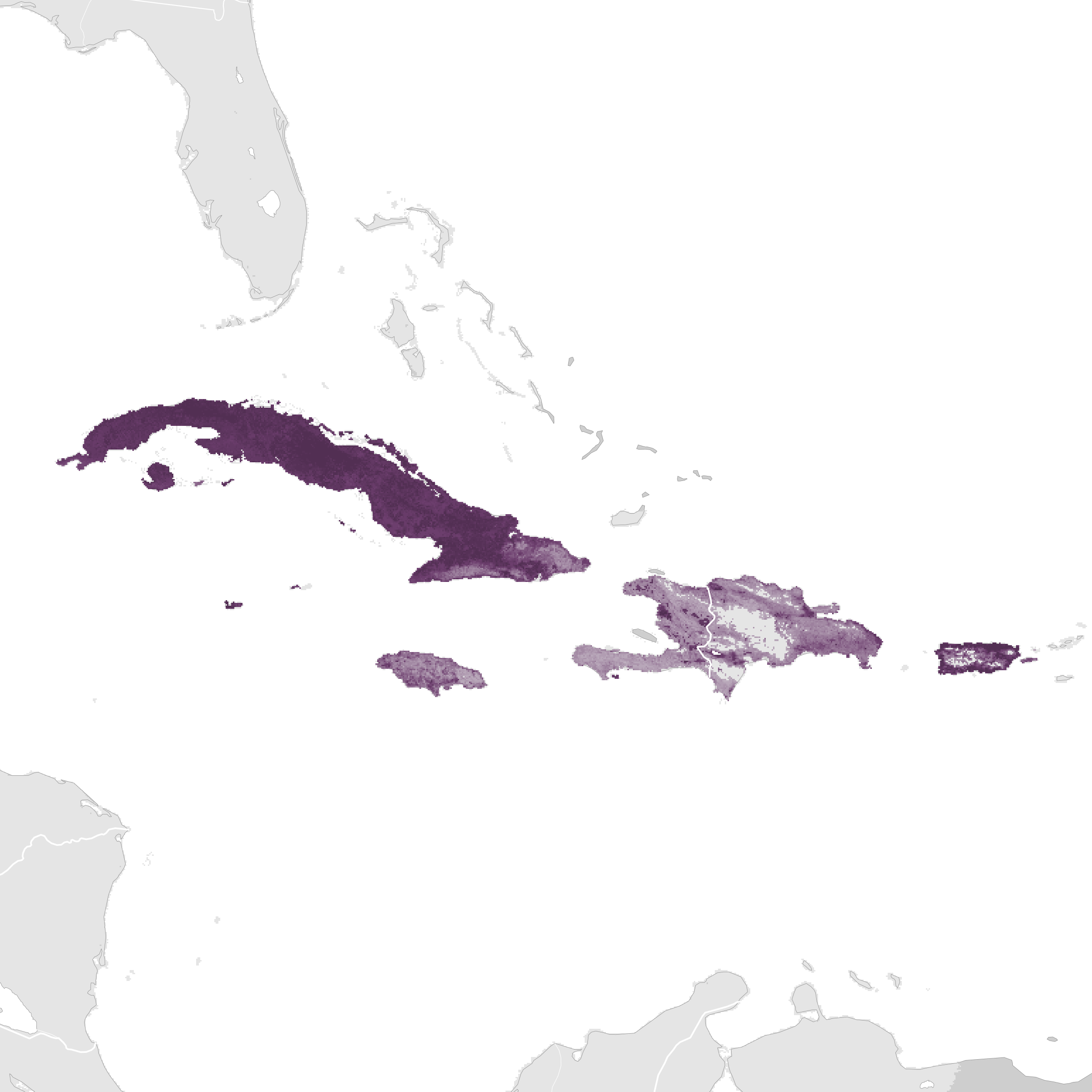Greater Antillean Grackle Quiscalus niger Scientific name definitions
Text last updated January 1, 2011
Sign in to see your badges
Species names in all available languages
| Language | Common name |
|---|---|
| Catalan | quíscal de les Antilles |
| Dutch | Antilliaanse Troepiaal |
| English | Greater Antillean Grackle |
| English (United States) | Greater Antillean Grackle |
| French | Quiscale noir |
| French (France) | Quiscale noir |
| German | Antillengrackel |
| Haitian Creole (Haiti) | Mèl diab |
| Icelandic | Seglsóti |
| Japanese | アンチルクロムクドリモドキ |
| Norwegian | antilltrupial |
| Polish | wilgowron czarny |
| Russian | Антильский гракл |
| Serbian | Veliki kukuruzar sa Antila |
| Slovak | vlhovec čierny |
| Slovenian | Antilski krakač |
| Spanish | Zanate Antillano |
| Spanish (Cuba) | Chichinguaco |
| Spanish (Dominican Republic) | Chinchilín |
| Spanish (Puerto Rico) | Mozambique |
| Spanish (Spain) | Zanate antillano |
| Swedish | antillerbåtstjärt |
| Turkish | Antil Kiskalı |
| Ukrainian | Гракл антильський |
Quiscalus niger (Boddaert, 1783)
Definitions
- QUISCALUS
- niger
The Key to Scientific Names
Legend Overview
Introduction
As its name suggests, the Greater Antillean Grackle is almost confined to the Greater Antilles, where it occurs on all four main islands, Cuba, Jamaica, Hispaniola, and Puerto Rico, but the species is also found on the Caymans. Seven subspecies are generally recognized across this range, some of them restricted to small islands, and they typically differ in the extent and color of the glossy tones to the plumage. Overall, the species appears glossy black with almost startlingly yellow eyes, and an unusual keel-shaped tail, which is slightly less developed in the female, and which one almost expects the bird to use as a ‘rudder’ in flight. Greater Antillean Grackles sometimes form large roosts, frequently nest in colonies on trees, and forage mainly on the ground, seeking out seeds and insects, but also taking a wide variety of other prey, including small lizards and even human scraps. These are noisy, bold birds, confident around Man, and very much ‘at home’ in heavily disturbed habitats.
Field Identification
Systematics History
Editor's Note: This article requires further editing work to merge existing content into the appropriate Subspecies sections. Please bear with us while this update takes place.
Formerly placed with Q. lugubris in a separate genus, Holoquiscalus, but recent genetic analysis indicates that Q. lugubris is closer to Q. nicaraguensis. The same DNA study revealed moderate sequence divergences among four populations of present species (Grand Cayman, Jamaica, Hispaniola and Puerto Rico). Existence of two races in Cuba possibly due to fact that gundlachii evolved later and is slowly replacing caribaeus on main island; the two intergrade in W Cuba (Pinar del Río). Seven subspecies recognized.Subspecies
Quiscalus niger caribaeus Scientific name definitions
Distribution
Quiscalus niger caribaeus (Todd, 1916)
Definitions
- QUISCALUS
- niger
- caribaea / caribaearum / caribaeus / caribbaea / caribbaearum / caribbaeus / caribbeus / caribboeus / caribeus / cariboea
The Key to Scientific Names
Legend Overview
Quiscalus niger gundlachii Scientific name definitions
Distribution
Quiscalus niger gundlachii Cassin, 1867
Definitions
- QUISCALUS
- niger
- gundlachi / gundlachii
The Key to Scientific Names
Legend Overview
Quiscalus niger caymanensis Scientific name definitions
Distribution
Quiscalus niger caymanensis Cory, 1886
Definitions
- QUISCALUS
- niger
- caymanensis
The Key to Scientific Names
Legend Overview
Quiscalus niger bangsi Scientific name definitions
Distribution
Quiscalus niger bangsi (Peters, 1921)
Definitions
- QUISCALUS
- niger
- bangsi
The Key to Scientific Names
Legend Overview
Quiscalus niger crassirostris Scientific name definitions
Distribution
Quiscalus niger crassirostris Swainson, 1838
Definitions
- QUISCALUS
- niger
- crassirostra / crassirostre / crassirostris
The Key to Scientific Names
Legend Overview
Quiscalus niger niger Scientific name definitions
Distribution
Quiscalus niger niger (Boddaert, 1783)
Definitions
- QUISCALUS
- niger
The Key to Scientific Names
Legend Overview
Quiscalus niger brachypterus Scientific name definitions
Distribution
Quiscalus niger brachypterus Cassin, 1867
Definitions
- QUISCALUS
- niger
- brachypterus
- Brachypterus
The Key to Scientific Names
Legend Overview
Distribution
Editor's Note: Additional distribution information for this taxon can be found in the 'Subspecies' article above. In the future we will develop a range-wide distribution article.
Habitat
Movement
Diet and Foraging
Sounds and Vocal Behavior
Breeding
Conservation Status

- Year-round
- Migration
- Breeding
- Non-Breeding






























